296 papers:
 DATE-2015-HuangKGT #scheduling
DATE-2015-HuangKGT #scheduling- Run and be safe: mixed-criticality scheduling with temporary processor speedup (PH, PK, GG, LT), pp. 1329–1334.
 DATE-2015-MaHJ #manycore
DATE-2015-MaHJ #manycore- A packet-switched interconnect for many-core systems with BE and RT service (RM, ZH, AJ), pp. 980–983.
 SIGMOD-2015-Anagnostopoulos #crowdsourcing #performance
SIGMOD-2015-Anagnostopoulos #crowdsourcing #performance- The Importance of Being Expert: Efficient Max-Finding in Crowdsourcing (AA, LB, AF, IM, MR), pp. 983–998.
 ICSME-2015-KranasZV #flexibility #interface
ICSME-2015-KranasZV #flexibility #interface- Fitness workout for fat interfaces: Be slim, clean, and flexible (SK, AVZ, PV), pp. 526–530.
 ICSME-2015-NittaM #abstraction #why
ICSME-2015-NittaM #abstraction #why- Delta extraction: An abstraction technique to comprehend why two objects could be related (NN, TM), pp. 61–70.
 STOC-2015-BackursI #distance #edit distance
STOC-2015-BackursI #distance #edit distance- Edit Distance Cannot Be Computed in Strongly Subquadratic Time (unless SETH is false) (AB, PI), pp. 51–58.
 ICALP-v1-2015-AzarC
ICALP-v1-2015-AzarC- Serving in the Dark should be done Non-Uniformly (YA, IRC), pp. 91–102.
 CHI-2015-BirnholtzMP #facebook #quote
CHI-2015-BirnholtzMP #facebook #quote- “Is it Weird to Still Be a Virgin”: Anonymous, Locally Targeted Questions on Facebook Confession Boards (JPB, NARM, AP), pp. 2613–2622.
 CHI-2015-DevendorfR #configuration management #hybrid
CHI-2015-DevendorfR #configuration management #hybrid- Being the Machine: Reconfiguring Agency and Control in Hybrid Fabrication (LD, KR), pp. 2477–2486.
 CHI-2015-MentisSPFS #programming
CHI-2015-MentisSPFS #programming- Being Seen: Co-Interpreting Parkinson’s Patient’s Movement Ability in Deep Brain Stimulation Programming (HMM, RS, SP, PF, LS), pp. 511–520.
 CSCW-2015-HindsRC
CSCW-2015-HindsRC- In the Flow, Being Heard, and Having Opportunities: Sources of Power and Power Dynamics in Global Teams (PJH, DR, CDC), pp. 864–875.
 CSCW-2015-IslamP #network #social
CSCW-2015-IslamP #network #social- Engagement and Well-being on Social Network Sites (AKMNI, SP), pp. 375–382.
 CSCW-2015-LiZLDG #collaboration #editing #trade-off #wiki
CSCW-2015-LiZLDG #collaboration #editing #trade-off #wiki- Is It Good to Be Like Wikipedia?: Exploring the Trade-offs of Introducing Collaborative Editing Model to Q&A Sites (GL, HZ, TL, XD, NG), pp. 1080–1091.
 LCT-2015-BajajHKPSDY #question #word
LCT-2015-BajajHKPSDY #question #word- Audio Cues: Can Sound Be Worth a Hundred Words? (JB, AH, AK, RMP, KS, OD, KY), pp. 14–23.
 SIGIR-2015-Hawking #question #what
SIGIR-2015-Hawking #question #what- If SIGIR had an Academic Track, What Would Be In It? (DH), p. 1077.
 ECMFA-2015-DiskinMC #category theory #imperative #model management #visual notation
ECMFA-2015-DiskinMC #category theory #imperative #model management #visual notation- A Model Management Imperative: Being Graphical Is Not Sufficient, You Have to Be Categorical (ZD, TSEM, KC), pp. 154–170.
 SAC-2015-LoffRM #predict #social #social media
SAC-2015-LoffRM #predict #social #social media- Predicting well-being with geo-referenced data collected from social media platforms (JL, MR, BM), pp. 1167–1173.
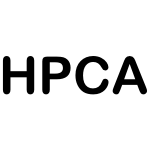 HPCA-2015-PeraisS #effectiveness #framework #named #predict
HPCA-2015-PeraisS #effectiveness #framework #named #predict- BeBoP: A cost effective predictor infrastructure for superscalar value prediction (AP, AS), pp. 13–25.
 DAC-2014-SorinMZ #architecture #power management
DAC-2014-SorinMZ #architecture #power management- Architecting Dynamic Power Management to be Formally Verifiable (DJS, OM, MZ), p. 3.
 SIGMOD-2014-CheungMS #database #lazy evaluation #named #query
SIGMOD-2014-CheungMS #database #lazy evaluation #named #query- Sloth: being lazy is a virtue (when issuing database queries) (AC, SM, ASL), pp. 931–942.
 SIGMOD-2014-HoweFFFKR #database #education #question
SIGMOD-2014-HoweFFFKR #database #education #question- Should we all be teaching “intro to data science” instead of “intro to databases”? (BH, MJF, JF, JF, TK, RR), pp. 917–918.
 STOC-2014-LiNW #algorithm #linear #sketching #streaming
STOC-2014-LiNW #algorithm #linear #sketching #streaming- Turnstile streaming algorithms might as well be linear sketches (YL, HLN, DPW), pp. 174–183.
 ICALP-v1-2014-MancinskaV #bound #probability
ICALP-v1-2014-MancinskaV #bound #probability- Unbounded Entanglement Can Be Needed to Achieve the Optimal Success Probability (LM, TV), pp. 835–846.
 CHI-2014-ShayKDHMSUBCC #question
CHI-2014-ShayKDHMSUBCC #question- Can long passwords be secure and usable? (RS, SK, ALD, P(H, MLM, SMS, BU, LB, NC, LFC), pp. 2927–2936.
 CHI-2014-SunDLLG #case study #using
CHI-2014-SunDLLG #case study #using- Being senior and ICT: a study of seniors using ICT in China (YS, XD, SL, TL, NG), pp. 3933–3942.
 CSCW-2014-MartinHOG
CSCW-2014-MartinHOG- Being a turker (DBM, BVH, JO, NG), pp. 224–235.
 CSCW-2014-PreistMC #volunteer
CSCW-2014-PreistMC #volunteer- Competing or aiming to be average?: normification as a means of engaging digital volunteers (CP, EM, DC), pp. 1222–1233.
 CSCW-2014-Rooksby #question
CSCW-2014-Rooksby #question- Can plans and situated actions be replicated? (JR), pp. 603–614.
 HCI-AS-2014-JanssonSBAT #automation #design
HCI-AS-2014-JanssonSBAT #automation #design- Authority and Level of Automation — Lessons to Be Learned in Design of In-vehicle Assistance Systems (AJ, PS, IB, AA, ST), pp. 413–424.
 HIMI-AS-2014-HaysahiH #collaboration #concept
HIMI-AS-2014-HaysahiH #collaboration #concept- Kit-Build Concept Mapping for Being Aware of the Gap of Exchanged Information in Collaborative Reading of the Literature (YH, TH), pp. 32–41.
 SCSM-2014-FrischlichRR #identification #social
SCSM-2014-FrischlichRR #identification #social- I’d Rather Die Than Be with You: The Effects of Mortality Salience and Negative Social Identity on Identification with a Virtual Group (LF, DR, OR), pp. 440–451.
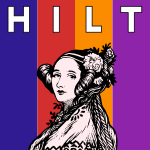 HILT-2014-BaggeH #algebra #api #specification #why
HILT-2014-BaggeH #algebra #api #specification #why- Specification of generic APIs, or: why algebraic may be better than pre/post (AHB, MH), pp. 71–80.
 HILT-2014-Crocker #c++ #question
HILT-2014-Crocker #c++ #question- Can C++ be made as safe as SPARK? (DC), pp. 5–12.
 ICPR-2014-YamashitaTYYF #strict
ICPR-2014-YamashitaTYYF #strict- To Be Bernoulli or to Be Gaussian, for a Restricted Boltzmann Machine (TY, MT, EY, YY, HF), pp. 1520–1525.
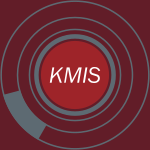 KMIS-2014-SaoutalMC #communication
KMIS-2014-SaoutalMC #communication- Should I Be Aware of the Information of Other Actors — Transversal Communication in Crisis Management (AS, NM, JPC), pp. 212–219.
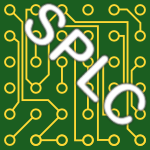 SPLC-2014-Reinhartz-Berger #automation #domain model #modelling
SPLC-2014-Reinhartz-Berger #automation #domain model #modelling- Can domain modeling be automated?: levels of automation in domain modeling (IRB), p. 359.
 ICDAR-2013-Newell #identification #question #what
ICDAR-2013-Newell #identification #question #what- What Should We Be Comparing for Writer Identification? (AJN), pp. 418–422.
 SIGMOD-2013-YakoutBE #automation #bound #scalability
SIGMOD-2013-YakoutBE #automation #bound #scalability- Don’t be SCAREd: use SCalable Automatic REpairing with maximal likelihood and bounded changes (MY, LBE, AKE), pp. 553–564.
 ICALP-v2-2013-Widmayer #nondeterminism
ICALP-v2-2013-Widmayer #nondeterminism- To Be Uncertain Is Uncomfortable, But to Be Certain Is Ridiculous (PW), p. 36.
 CHI-2013-HakanssonS #product line
CHI-2013-HakanssonS #product line- Beyond being green: simple living families and ICT (MH, PS), pp. 2725–2734.
 CHI-2013-IsaacsKWLHW #how
CHI-2013-IsaacsKWLHW #how- Echoes from the past: how technology mediated reflection improves well-being (EI, AK, AW, TL, VH, SW), pp. 1071–1080.
 CHI-2013-SodhiJFBM #3d #collaboration #mobile #named
CHI-2013-SodhiJFBM #3d #collaboration #mobile #named- BeThere: 3D mobile collaboration with spatial input (RS, BRJ, DAF, BPB, GM), pp. 179–188.
 CSCW-2013-LarsonRSS #exclamation #game studies #student
CSCW-2013-LarsonRSS #exclamation #game studies #student- I want to be Sachin Tendulkar!: a spoken english cricket game for rural students (ML, NR, AS, SS), pp. 1353–1364.
 DUXU-NTE-2013-SannaVBBR #approach #behaviour #design
DUXU-NTE-2013-SannaVBBR #approach #behaviour #design- Engineering AwarenessTM: An e-Service Design Approach for Behavioral Change in Healthcare and Well-Being (AS, SV, SB, IB, AR), pp. 558–567.
 DUXU-NTE-2013-ViciniBRS #behaviour
DUXU-NTE-2013-ViciniBRS #behaviour- Well-Being on the Go: An IoT Vending Machine Service for the Promotion of Healthy Behaviors and Lifestyles (SV, SB, AR, AS), pp. 594–603.
 HIMI-HSM-2013-Wesugi #approach #design #experience #novel #simulation
HIMI-HSM-2013-Wesugi #approach #design #experience #novel #simulation- Design Approach of Simulation Exercise with Use of Device and Its Significance — Design of Novel Device for Realistic Experience of Being a Hemiplegia Patient (SW), pp. 315–324.
 OCSC-2013-HallCW #approach #community #predict
OCSC-2013-HallCW #approach #community #predict- Well-Being’s Predictive Value — A Gamified Approach to Managing Smart Communities (MH, SC, CW), pp. 13–22.
 OCSC-2013-LopezFM #behaviour
OCSC-2013-LopezFM #behaviour- Being Example: A Different Kind of Leadership, Looking for Exemplary Behaviors (SRL, HMF, ASM), pp. 182–190.
 AdaEurope-2013-XueN
AdaEurope-2013-XueN- Measuring the Odds of Statements Being Faulty (XX, ASN), pp. 109–126.
 ICEIS-v3-2013-SilvaSH #design
ICEIS-v3-2013-SilvaSH #design- Co-authoring Proto-patterns to Support on Designing Systems to Be Adequate for Users´ Diversity (JCAS, MARS, ECMH), pp. 164–169.
 CIKM-2013-KamathC #learning #predict #what
CIKM-2013-KamathC #learning #predict #what- Spatio-temporal meme prediction: learning what hashtags will be popular where (KYK, JC), pp. 1341–1350.
 ECIR-2013-Cleger-TamayoFHT #predict #quality #recommendation
ECIR-2013-Cleger-TamayoFHT #predict #quality #recommendation- Being Confident about the Quality of the Predictions in Recommender Systems (SCT, JMFL, JFH, NT), pp. 411–422.
 SEKE-2013-BazharAJ #behaviour #modelling #named #repository
SEKE-2013-BazharAJ #behaviour #modelling #named #repository- BeMoRe: a Repository for Handling Models Behaviors (YB, YAA, SJ), pp. 262–267.
 SIGIR-2013-RaiberCK #optimisation
SIGIR-2013-RaiberCK #optimisation- Shame to be sham: addressing content-based grey hat search engine optimization (FR, KCT, OK), pp. 1013–1016.
 SKY-2013-Gomes #how #ontology #recommendation #representation #using
SKY-2013-Gomes #how #ontology #recommendation #representation #using- Representing Knowledge using Ontologies: How Search, Browse and Recommendation Can Be Performed (PG), pp. 1–3.
 RE-2013-WangLWYZL #debugging #dependence #integration #network #question #requirements
RE-2013-WangLWYZL #debugging #dependence #integration #network #question #requirements- Can requirements dependency network be used as early indicator of software integration bugs? (JW, JL, QW, DY, HZ, ML), pp. 185–194.
 SPLC-2013-SchulzeMB #functional #question #safety #variability
SPLC-2013-SchulzeMB #functional #question #safety #variability- Functional safety and variability: can it be brought together? (MS, JM, DB), pp. 236–243.
 PLOS-2013-Kell #operating system #question
PLOS-2013-Kell #operating system #question- The operating system: should there be one? (SK), p. 7.
 CASE-2012-HoNNH #question #what
CASE-2012-HoNNH #question #what- What can be inferred from a tactile arrayed sensor in autonomous in-hand manipulation? (VAH, TN, AN, SH), pp. 461–468.
 DAC-2012-SharifiSKI #capacity
DAC-2012-SharifiSKI #capacity- Courteous cache sharing: being nice to others in capacity management (AS, SS, MTK, MJI), pp. 678–687.
 ITiCSE-2012-Assiter #effectiveness
ITiCSE-2012-Assiter #effectiveness- Introvert educators: techniques to be effective in the traditional face-to-face CS classroom (KVA), p. 381.
 ITiCSE-2012-HershkovichH #education #how #tool support
ITiCSE-2012-HershkovichH #education #how #tool support- How innovative technology tools can be used to create new methodology for teaching knowledge (EH, BH), p. 387.
 ICSM-2012-ZhangPXZ #developer #what #why
ICSM-2012-ZhangPXZ #developer #what #why- Cloning practices: Why developers clone and what can be changed (GZ, XP, ZX, WZ), pp. 285–294.
 CHI-2012-JohnsonRLB #challenge #research
CHI-2012-JohnsonRLB #challenge #research- Being in the thick of in-the-wild studies: the challenges and insights of researcher participation (RMGJ, YR, JvdL, NBB), pp. 1135–1144.
 CHI-2012-KoppelBMW #behaviour
CHI-2012-KoppelBMW #behaviour- Chained displays: configurations of public displays can be used to influence actor-, audience-, and passer-by behavior (MTK, GB, JM, RW), pp. 317–326.
 CSCW-2012-KoehneSO
CSCW-2012-KoehneSO- Remote and alone: coping with being the remote member on the team (BK, PCS, JSO), pp. 1257–1266.
 CSCW-2012-PoelmanALJ
CSCW-2012-PoelmanALJ- As if being there: mediated reality for crime scene investigation (RP, OA, SL, PJ), pp. 1267–1276.
 CSCW-2012-StarbirdP #how #information management
CSCW-2012-StarbirdP #how #information management- (How) will the revolution be retweeted?: information diffusion and the 2011 Egyptian uprising (KS, LP), pp. 7–16.
 HILT-2012-Bosch #library
HILT-2012-Bosch #library- Synchronization cannot be implemented as a library (GB), pp. 73–80.
 ICEIS-v2-2012-Pohjalainen #agile #bottom-up #modelling
ICEIS-v2-2012-Pohjalainen #agile #bottom-up #modelling- Agile Models Need to be Bottom-up — Adding Productivity to a Late Project Makes it Later (PP), pp. 395–400.
 CIKM-2012-StuparM #query
CIKM-2012-StuparM #query- Being picky: processing top-k queries with set-defined selections (AS, SM), pp. 912–921.
 ICPR-2012-HadidGKPBN #question
ICPR-2012-HadidGKPBN #question- Can gait biometrics be Spoofed? (AH, MG, VK, MP, JDB, MSN), pp. 3280–3283.
 SIGIR-2012-MaSC #hashtag #question
SIGIR-2012-MaSC #hashtag #question- Will this #hashtag be popular tomorrow? (ZM, AS, GC), pp. 1173–1174.
 SAC-2012-NunesARTCS #analysis #data type
SAC-2012-NunesARTCS #analysis #data type- To be or not to be real: fractal analysis of data streams from a regional climate change model (SAN, AMHdÁ, LASR, AJMT, PPC, EPMdS), pp. 831–832.
 SAC-2012-RahmanOMCA #development #mobile
SAC-2012-RahmanOMCA #development #mobile- Let EcoDrive be your guide: development of a mobile tool to reduce carbon footprint and promote green transport (FR, CO, KM, JC, SIA), pp. 519–524.
 ICSE-2012-LemosFSG #agile #assessment #development #empirical #programming
ICSE-2012-LemosFSG #agile #assessment #development #empirical #programming- Development of auxiliary functions: Should you be agile? An empirical assessment of pair programming and test-first programming (OALL, FCF, FFS, AG), pp. 529–539.
 ICSE-2012-ZhouZL #debugging #information retrieval #locality
ICSE-2012-ZhouZL #debugging #information retrieval #locality- Where should the bugs be fixed? More accurate information retrieval-based bug localization based on bug reports (JZ, HZ, DL), pp. 14–24.
 OSDI-2012-YuanPHLLTZS
OSDI-2012-YuanPHLLTZS- Be Conservative: Enhancing Failure Diagnosis with Proactive Logging (DY, SP, PH, YL, MMJL, XT, YZ, SS), pp. 293–306.
 PPoPP-2012-BlellochFGS #algorithm #parallel #performance
PPoPP-2012-BlellochFGS #algorithm #parallel #performance- Internally deterministic parallel algorithms can be fast (GEB, JTF, PBG, JS), pp. 181–192.
 ICST-2012-ChenLYS #question #testing #user interface #what
ICST-2012-ChenLYS #question #testing #user interface #what- When a GUI Regression Test Failed, What Should be Blamed? (JC, ML, KY, BS), pp. 467–470.
 DAC-2011-Mador-HaimAM #consistency #how #memory management #modelling #question #testing
DAC-2011-Mador-HaimAM #consistency #how #memory management #modelling #question #testing- Litmus tests for comparing memory consistency models: how long do they need to be? (SMH, RA, MMKM), pp. 504–509.
 SIGMOD-2011-SadoghiJ #named
SIGMOD-2011-SadoghiJ #named- BE-tree: an index structure to efficiently match boolean expressions over high-dimensional discrete space (MS, HAJ), pp. 637–648.
 STOC-2011-RegevK #communication #quantum
STOC-2011-RegevK #communication #quantum- Quantum one-way communication can be exponentially stronger than classical communication (OR, BK), pp. 31–40.
 DLT-2011-Zetzsche
DLT-2011-Zetzsche- A Sufficient Condition for Erasing Productions to Be Avoidable (GZ), pp. 452–463.
 CHI-2011-SauroL #design #question #usability
CHI-2011-SauroL #design #question #usability- When designing usability questionnaires, does it hurt to be positive? (JS, JRL), pp. 2215–2224.
 CSCW-2011-FarnhamC #online #social
CSCW-2011-FarnhamC #online #social- Faceted identity, faceted lives: social and technical issues with being yourself online (SF, EFC), pp. 359–368.
 HCI-MIIE-2011-TakahashiAI #question #twitter
HCI-MIIE-2011-TakahashiAI #question #twitter- Can Twitter Be an Alternative of Real-World Sensors? (TT, SA, NI), pp. 240–249.
 HIMI-v2-2011-TakadamaOSMOIHS #order #question #what
HIMI-v2-2011-TakadamaOSMOIHS #order #question #what- What Kinds of Human Negotiation Skill Can Be Acquired by Changing Negotiation Order of Bargaining Agents? (KT, AO, KS, HM, MO, YI, KH, HS), pp. 335–344.
 CIKM-2011-SakaiKS #information management
CIKM-2011-SakaiKS #information management- Click the search button and be happy: evaluating direct and immediate information access (TS, MPK, YIS), pp. 621–630.
 ECIR-2011-MagdyJ #black box #question
ECIR-2011-MagdyJ #black box #question- Should MT Systems Be Used as Black Boxes in CLIR? (WM, GJFJ), pp. 683–686.
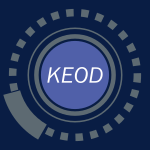 KEOD-2011-SharmaB #ontology #problem #question
KEOD-2011-SharmaB #ontology #problem #question- Can Ontologies Be Sufficient Solution to Requirement Engineering Problem? (RS, KKB), pp. 461–465.
 POPL-2011-AttiyaGHKMV #algorithm #concurrent #order
POPL-2011-AttiyaGHKMV #algorithm #concurrent #order- Laws of order: expensive synchronization in concurrent algorithms cannot be eliminated (HA, RG, DH, PK, MMM, MTV), pp. 487–498.
 ASE-2010-Green #implementation #specification
ASE-2010-Green #implementation #specification- Keynote address: the actual implementation will be derived from the formal specification — KBSA, 1983 (CG), pp. 183–184.
 CASE-2010-CabasinoGS #fault #petri net #using
CASE-2010-CabasinoGS #fault #petri net #using- Diagnosis using labeled Petri nets: Faults may either be silent or undistinguishable events (MPC, AG, CS), pp. 485–490.
 DATE-2010-GrottesiMRB #animation #parallel
DATE-2010-GrottesiMRB #animation #parallel- Parallel subdivision surface rendering and animation on the Cell BE processor (RG, SM, MR, LB), pp. 178–183.
 DocEng-2010-Vega-OliverosMP #automation #documentation #generative #interactive #quote
DocEng-2010-Vega-OliverosMP #automation #documentation #generative #interactive #quote- “This conversation will be recorded”: automatically generating interactive documents from captured media (DAVO, DSM, MdGCP), pp. 37–40.
 HT-2010-MitzlaffBSH #analysis #network
HT-2010-MitzlaffBSH #analysis #network- Visit me, click me, be my friend: an analysis of evidence networks of user relationships in BibSonomy (FM, DB, GS, AH), pp. 265–270.
 CSEET-2010-Broman #education #question #re-engineering
CSEET-2010-Broman #education #question #re-engineering- Should Software Engineering Projects Be the Backbone or the Tail of Computing Curricula? (DB), pp. 153–156.
 CSEET-2010-Thompson #effectiveness #industrial #re-engineering #why
CSEET-2010-Thompson #effectiveness #industrial #re-engineering #why- Why Better Industrial/Academic Links Are Needed If There is to Be an Effective Software Engineering Workforce (JBT), pp. 105–112.
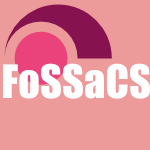 FoSSaCS-2010-AltenkirchCU #monad
FoSSaCS-2010-AltenkirchCU #monad- Monads Need Not Be Endofunctors (TA, JC, TU), pp. 297–311.
 SCAM-2010-Harman #analysis #source code #why
SCAM-2010-Harman #analysis #source code #why- Why Source Code Analysis and Manipulation Will Always be Important (MH), pp. 7–19.
 PEPM-2010-Siek #metalanguage
PEPM-2010-Siek #metalanguage- General purpose languages should be metalanguages (JGS), pp. 3–4.
 ICALP-v1-2010-Welzl #constraints #satisfiability
ICALP-v1-2010-Welzl #constraints #satisfiability- When Conflicting Constraints Can Be Resolved — The Lovász Local Lemma and Satisfiability (EW), p. 18.
 ICALP-v2-2010-AlistarhGGZ #cost analysis #how #performance
ICALP-v2-2010-AlistarhGGZ #cost analysis #how #performance- How Efficient Can Gossip Be? (On the Cost of Resilient Information Exchange) (DA, SG, RG, MZ), pp. 115–126.
 ICGT-2010-BrandtH #enterprise #graph transformation #how #modelling #question
ICGT-2010-BrandtH #enterprise #graph transformation #how #modelling #question- How Far Can Enterprise Modeling for Banking Be Supported by Graph Transformation? (CB, FH), pp. 3–26.
 CHI-2010-AhlstromCGI #design #modelling #why
CHI-2010-AhlstromCGI #design #modelling #why- Why it’s quick to be square: modelling new and existing hierarchical menu designs (DA, AC, CG, PI), pp. 1371–1380.
 CHI-2010-BurkeML #network #process #social
CHI-2010-BurkeML #network #process #social- Social network activity and social well-being (MB, CM, TML), pp. 1909–1912.
 CHI-2010-KarkkainenVV #case study #mobile #process
CHI-2010-KarkkainenVV #case study #mobile #process- I don’t mind being logged, but want to remain in control: a field study of mobile activity and context logging (TK, TV, KVVM), pp. 163–172.
 SIGAda-2010-FongBLGWMW
SIGAda-2010-FongBLGWMW- Wouldn’t it be nice to have software labels (EF, PEB, RFL, SG, LW, GM, JW), pp. 31–32.
 ICEIS-HCI-2010-Mital #mobile #privacy
ICEIS-HCI-2010-Mital #mobile #privacy- Consumer Privacy Being Raided and Invaded — The Negative Side of Mobile Advertising (MM), pp. 117–123.
 ECIR-2010-AnderkaSP #bound #similarity #why
ECIR-2010-AnderkaSP #bound #similarity #why- Cross-Language High Similarity Search: Why No Sub-linear Time Bound Can Be Expected (MA, BS, MP), pp. 640–644.
 ICPR-2010-YonetaniKHM #estimation
ICPR-2010-YonetaniKHM #estimation- Gaze Probing: Event-Based Estimation of Objects Being Focused On (RY, HK, TH, TM), pp. 101–104.
 SEKE-2010-AsteasuainB #specification
SEKE-2010-AsteasuainB #specification- Specification patterns can be formal and still easy (FA, VAB), pp. 430–436.
 OOPSLA-2010-Stanley
OOPSLA-2010-Stanley- To achieve our highest goals, we must be willing to abandon them (KOS), p. 3.
 SAC-2010-ChowdhuryZ #complexity #metric #question
SAC-2010-ChowdhuryZ #complexity #metric #question- Can complexity, coupling, and cohesion metrics be used as early indicators of vulnerabilities? (IC, MZ), pp. 1963–1969.
 SAC-2010-LiuCXMBG #architecture #domain-specific language #question
SAC-2010-LiuCXMBG #architecture #domain-specific language #question- Can domain-specific languages be implemented by service-oriented architecture? (SHL, AC, XX, MM, BRB, JG), pp. 2491–2492.
 OSDI-2010-SherwoodGYACMP #network #question
OSDI-2010-SherwoodGYACMP #network #question- Can the Production Network Be the Testbed? (RS, GG, KKY, GA, MC, NM, GMP), pp. 365–378.
 ESOP-2009-WadlerF #source code
ESOP-2009-WadlerF #source code- Well-Typed Programs Can’t Be Blamed (PW, RBF), pp. 1–16.
 CHI-2009-ChettyBMJ #comprehension #power management
CHI-2009-ChettyBMJ #comprehension #power management- It’s not easy being green: understanding home computer power management (MC, AJBB, BM, PJ), pp. 1033–1042.
 CHI-2009-IsbisterH #challenge #design #evaluation #human-computer #on the
CHI-2009-IsbisterH #challenge #design #evaluation #human-computer #on the- On being supple: in search of rigor without rigidity in meeting new design and evaluation challenges for HCI practitioners (KI, KH), pp. 2233–2242.
 CHI-2009-LindleyHS
CHI-2009-LindleyHS- Desiring to be in touch in a changing communications landscape: attitudes of older adults (SEL, RHRH, AS), pp. 1693–1702.
 CHI-2009-Zimmerman #design #people
CHI-2009-Zimmerman #design #people- Designing for the self: making products that help people become the person they desire to be (JZ), pp. 395–404.
 HCI-NT-2009-PalanqueLNB #interactive #prototype
HCI-NT-2009-PalanqueLNB #interactive #prototype- High-Fidelity Prototyping of Interactive Systems Can Be Formal Too (PAP, JFL, DN, EB), pp. 667–676.
 ICEIS-HCI-2009-TaggB #how #information management #quantum #question
ICEIS-HCI-2009-TaggB #how #information management #quantum #question- How Can a Quantum Improvement in Personal and Group Information Management be Realized? (RT, TB), pp. 136–141.
 ECIR-2009-Kettunen #metric #question #source code
ECIR-2009-Kettunen #metric #question #source code- Choosing the Best MT Programs for CLIR Purposes — Can MT Metrics Be Helpful? (KK), pp. 706–712.
 SIGIR-2009-ElsasC #concurrent #evaluation #online #retrieval #thread
SIGIR-2009-ElsasC #concurrent #evaluation #online #retrieval #thread- It pays to be picky: an evaluation of thread retrieval in online forums (JLE, JGC), pp. 714–715.
 SAT-2009-LewisMSNBG #distributed #named
SAT-2009-LewisMSNBG #distributed #named- PaQuBE: Distributed QBF Solving with Advanced Knowledge Sharing (MDTL, PM, TS, MN, BB, EG), pp. 509–523.
 HT-2008-ChoudhurySJS08a #communication #correlation #process #question
HT-2008-ChoudhurySJS08a #communication #correlation #process #question- Can blog communication dynamics be correlated with stock market activity? (MDC, HS, AJ, DDS), pp. 55–60.
 CSEET-2008-Epstein #agile #how #process #student
CSEET-2008-Epstein #agile #how #process #student- Getting Students to Think About How Agile Processes can be Made More Secure (RGE), pp. 51–58.
 MSR-2008-Bernstein #data mining #how #mining
MSR-2008-Bernstein #data mining #how #mining- How to learn enough data mining to be dangerous in 60 minutes (AB), pp. 77–78.
 ICALP-C-2008-DingDYCC #question
ICALP-C-2008-DingDYCC #question- Could SFLASH be Repaired? (JD, VD, BYY, CHOC, CMC), pp. 691–701.
 CHI-2008-JonssonHN #how #information management
CHI-2008-JonssonHN #how #information management- How accurate must an in-car information system be?: consequences of accurate and inaccurate information in cars (IMJ, HH, CN), pp. 1665–1674.
 CSCW-2008-PlodererHT #network #online #social
CSCW-2008-PlodererHT #network #online #social- Being online, living offline: the influence of social ties over the appropriation of social network sites (BP, SH, PT), pp. 333–342.
 CIKM-2008-BischoffFNP #question
CIKM-2008-BischoffFNP #question- Can all tags be used for search? (KB, CSF, WN, RP), pp. 193–202.
 SIGIR-2008-McNameeNM
SIGIR-2008-McNameeNM- Don’t have a stemmer?: be un+concern+ed (PM, CKN, JM), pp. 813–814.
 ICMT-2008-SiikarlaLSS #rest
ICMT-2008-SiikarlaLSS #rest- Transformations Have to be Developed ReST Assured (MS, ML, PS, TS), pp. 1–15.
 SAC-2008-AdaikkalavanC #exclamation
SAC-2008-AdaikkalavanC #exclamation- Events must be complete in event processing! (RA, SC), pp. 1038–1039.
 SAC-2008-FariaM #recognition #scalability #speech
SAC-2008-FariaM #recognition #scalability #speech- When a mismatch can be good: large vocabulary speech recognition trained with idealized tandem features (AF, NM), pp. 1574–1577.
 SAT-2008-SchederZ #how #question #satisfiability
SAT-2008-SchederZ #how #question #satisfiability- How Many Conflicts Does It Need to Be Unsatisfiable? (DS, PZ), pp. 246–256.
 ASE-2007-Selic #automation #what
ASE-2007-Selic #automation #what- The embarrassing truth about software automation and what should be done about it (BS), p. 3.
 DAC-2007-IrvineL #hardware #question
DAC-2007-IrvineL #hardware #question- Trusted Hardware: Can It Be Trustworthy? (CEI, KNL), pp. 1–4.
 HT-2007-NelsonSM #hypermedia
HT-2007-NelsonSM #hypermedia- Back to the future: hypertext the way it used to be (THN, RAS, MM), pp. 227–228.
 ITiCSE-2007-PecinovskyP #interface #order
ITiCSE-2007-PecinovskyP #interface #order- Order of explanation should be interface: abstract classes — overriding (RP, JP), p. 338.
 STOC-2007-Austrin #satisfiability
STOC-2007-Austrin #satisfiability- Balanced max 2-sat might not be the hardest (PA), pp. 189–197.
 ILC-2007-Sperber #all about #lessons learnt #process
ILC-2007-Sperber #all about #lessons learnt #process- It’s all about being right: lessons from the R6RS process (MS), p. 7.
 DHM-2007-SadasivanG #question
DHM-2007-SadasivanG #question- Can We Use Technology to Train Inspectors to Be More Systematic? (SS, AKG), pp. 959–968.
 HCI-AS-2007-Moallem #enterprise #how
HCI-AS-2007-Moallem #enterprise #how- Excellence in Ease of Use with Rich Functionality How Enterprise Software Applications with Rich Functionality Can Be Built to Excel in Ease of Use (AM), pp. 672–681.
 HCI-IDU-2007-HwangP #experience #social
HCI-IDU-2007-HwangP #experience #social- Being Together: User’s Subjective Experience of Social Presence in CMC Environments (HSH, SP), pp. 844–853.
 HCI-IDU-2007-VanharantaS #interactive
HCI-IDU-2007-VanharantaS #interactive- Holistic Interaction Between the Computer and the Active Human Being (HV, TS), pp. 252–261.
 HCI-MIE-2007-GratchWOLMWM #question
HCI-MIE-2007-GratchWOLMWM #question- Can Virtual Humans Be More Engaging Than Real Ones? (JG, NW, AO, FL, MM, RJvdW, LPM), pp. 286–297.
 OOPSLA-2007-KuhneS #multi #programming
OOPSLA-2007-KuhneS #multi #programming- Can programming be liberated from the two-level style: multi-level programming with deepjava (TK, DS), pp. 229–244.
 ICSE-2007-MaidenNR #case study #experience #requirements
ICSE-2007-MaidenNR #case study #experience #requirements- Can Requirements Be Creative? Experiences with an Enhanced Air Space Management System (NAMM, CN, SR), pp. 632–641.
 DAC-2006-YangCBDSK #question
DAC-2006-YangCBDSK #question- Entering the hot zone: can you handle the heat and be cool? (AY, RC, SB, JAD, SS, UK), pp. 174–175.
 ITiCSE-2006-RobilaR #education
ITiCSE-2006-RobilaR #education- Don’t be a phish: steps in user education (SAR, JWR), pp. 237–241.
 ICSM-2006-XingS #case study #eclipse #how #refactoring
ICSM-2006-XingS #case study #eclipse #how #refactoring- Refactoring Practice: How it is and How it Should be Supported — An Eclipse Case Study (ZX, ES), pp. 458–468.
 STOC-2006-Impagliazzo #algorithm #question #random
STOC-2006-Impagliazzo #algorithm #question #random- Can every randomized algorithm be derandomized? (RI), pp. 373–374.
 STOC-2006-Nordstrom #proving
STOC-2006-Nordstrom #proving- Narrow proofs may be spacious: separating space and width in resolution (JN), pp. 507–516.
 DLT-2006-GurevichW #question #state machine
DLT-2006-GurevichW #question #state machine- Can Abstract State Machines Be Useful in Language Theory? (YG, CW), pp. 14–19.
 CHI-2006-BosONSHJ #distributed #question
CHI-2006-BosONSHJ #distributed #question- Collocation bindness in partially distributed groups: is there a downside to being collocated? (NB, JSO, NN, NSS, SH, EWJ), pp. 1313–1321.
 CHI-2006-BrownB
CHI-2006-BrownB- The television will be revolutionized: effects of PVRs and filesharing on television watching (BB, LB), pp. 663–666.
 CHI-2006-NimwegenBOS #effectiveness
CHI-2006-NimwegenBOS #effectiveness- The paradox of the assisted user: guidance can be counterproductive (CvN, DDB, HvO, HS), pp. 917–926.
 CHI-2006-RoblesSRN #how
CHI-2006-RoblesSRN #how- Being watched or being special: how I learned to stop worrying and love being monitored, surveilled, and assessed (ER, AS, KR, CN), pp. 831–839.
 CHI-2006-ShklovskiKC #internet
CHI-2006-ShklovskiKC #internet- Routine patterns of internet use & psychological well-being: coping with a residential move (IS, REK, JNC), pp. 969–978.
 SIGAda-2006-Taft #ada #exclamation #using #why
SIGAda-2006-Taft #ada #exclamation #using #why- Why you should be using Ada 2005 now! (STT), p. 75.
 SAT-2006-DantsinW #constant #performance #satisfiability
SAT-2006-DantsinW #constant #performance #satisfiability- MAX-SAT for Formulas with Constant Clause Density Can Be Solved Faster Than in O(s2) Time (ED, AW), pp. 266–276.
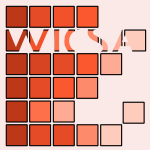 WICSA-2005-LungZG #architecture #what
WICSA-2005-LungZG #architecture #what- Reflection on Software Architecture Practices — What Works, What Remains to Be Seen, and What Are the Gaps (CHL, MZ, NG), pp. 221–222.
 DAC-2005-FoxCMHHJKYZ #approach #question
DAC-2005-FoxCMHHJKYZ #approach #question- Should our power approach be current? (TF, LC, SM, DH, EPH, VJ, AK, AY, PSZ), p. 611.
 DAC-2005-NandraDMDHLSA
DAC-2005-NandraDMDHLSA- Interconnects are moving from MHz→GHz should you be afraid?: or... “my giga hertz, does yours?” (NN, PD, RM, JFD, AH, BL, JS, JA), pp. 289–290.
 DATE-2005-ZorianFWESGR #industrial #question
DATE-2005-ZorianFWESGR #industrial #question- Semiconductor Industry Disaggregation vs Reaggregation: Who Will be the Shark? (YZ, BF, DW, JE, GS, MG, KNR), p. 572.
 ICDAR-2005-MoussaZAB #classification
ICDAR-2005-MoussaZAB #classification- Can Fractal Dimension Be Used In Font Classification (SBM, AZ, AMA, AB), pp. 146–150.
 PLDI-2005-Boehm #library #thread
PLDI-2005-Boehm #library #thread- Threads cannot be implemented as a library (HJB), pp. 261–268.
 STOC-2005-BenjaminiSW
STOC-2005-BenjaminiSW- Balanced boolean functions that can be evaluated so that every input bit is unlikely to be read (IB, OS, DBW), pp. 244–250.
 ICEIS-v3-2005-Al-Fedaghi
ICEIS-v3-2005-Al-Fedaghi- The “Right to be Let Alone” and Private Information (SSAF), pp. 98–107.
 ICEIS-v5-2005-Murano #effectiveness #feedback #user interface #why
ICEIS-v5-2005-Murano #effectiveness #feedback #user interface #why- Why Anthropomorphic User Interface Feedback can be Effective and Preferred by Users (PM), pp. 12–19.
 SIGIR-2005-AllanCL #information retrieval #question
SIGIR-2005-AllanCL #information retrieval #question- When will information retrieval be “good enough”? (JA, BC, JL), pp. 433–440.
 TLCA-2005-Hayashi #game studies #proving #question
TLCA-2005-Hayashi #game studies #proving #question- Can Proofs Be Animated By Games? (SH), pp. 11–22.
 DATE-DF-2004-Werner #quality #question
DATE-DF-2004-Werner #quality #question- Can IP Quality be Objectively Measured? (KW), pp. 330–331.
 CSEET-2004-SmithLL #java #question #re-engineering #realtime
CSEET-2004-SmithLL #java #question #re-engineering #realtime- Can Real-Time Software Engineering be Taught to Java Programmers? (SS, SWL, AL), pp. 124–129.
 ITiCSE-2004-MintonBD #case study #problem
ITiCSE-2004-MintonBD #case study #problem- If diversity is a problem could e-learning be part of the solution?: a case study (LM, RDB, VD), pp. 42–46.
 ICALP-2004-BojanczykC #automaton
ICALP-2004-BojanczykC #automaton- Tree-Walking Automata Cannot Be Determinized (MB, TC), pp. 246–256.
 CSEET-2003-Cowling #question #what
CSEET-2003-Cowling #question #what- What Should Graduating Software Engineers Be Able To Do? (AJC), pp. 88–98.
 ITiCSE-2003-Christensen #education #exclamation #testing #topic
ITiCSE-2003-Christensen #education #exclamation #testing #topic- Systematic testing should not be a topic in the computer science curriculum! (HBC), pp. 7–10.
 ITiCSE-2003-EkateriniSP #education #learning #problem
ITiCSE-2003-EkateriniSP #education #learning #problem- Teaching IT in secondary education through problem-based learning could be really beneficial (GE, BS, GP), p. 243.
 FoSSaCS-2003-BonevaT
FoSSaCS-2003-BonevaT- When Ambients Cannot Be Opened (IB, JMT), pp. 169–184.
 FoSSaCS-2003-Maier #composition
FoSSaCS-2003-Maier #composition- Compositional Circular Assume-Guarantee Rules Cannot Be Sound and Complete (PM), pp. 343–357.
 ICEIS-v4-2003-StanojevicTV #named
ICEIS-v4-2003-StanojevicTV #named- FIDES — A Financial Decision Aid That Can Be Trusted (MS, VT, SV), pp. 103–110.
 SIGIR-2003-Roelleke #probability
SIGIR-2003-Roelleke #probability- A frequency-based and a poisson-based definition of the probability of being informative (TR), pp. 227–234.
 SAC-2003-MernikGZB #parsing #question
SAC-2003-MernikGZB #parsing #question- Can a Parser be Generated from Examples? (MM, GG, VZ, BRB), pp. 1063–1067.
 ICSE-2003-Cohoon #women
ICSE-2003-Cohoon #women- Must There Be So Few? Including Women in CS (JMC), pp. 668–675.
 SAT-2003-GoldbergN #how #question
SAT-2003-GoldbergN #how #question- How Good Can a Resolution Based SAT-solver Be? (EG, YN), pp. 37–52.
 TLCA-2003-Kahrs #source code
TLCA-2003-Kahrs #source code- Well-Going Programs Can Be Typed (SK), pp. 167–179.
 STOC-2002-DinurS
STOC-2002-DinurS- The importance of being biased (ID, SS), pp. 33–42.
 DLT-2002-UmeoK #automaton #communication #infinity #realtime #sequence
DLT-2002-UmeoK #automaton #communication #infinity #realtime #sequence- An Infinite Prime Sequence Can Be Generated in Real-Time by a 1-Bit Inter-cell Communication Cellular Automaton (HU, NK), pp. 339–348.
 ICGT-2002-Harel #behaviour #requirements #why
ICGT-2002-Harel #behaviour #requirements #why- Can Behavioral Requirements Be Executed? (And Why Would We Want to Do So?) (DH), pp. 6–7.
 CHI-2002-HudsonCKE #quote #research
CHI-2002-HudsonCKE #quote #research- “I’d be overwhelmed, but it’s just one more thing to do”: availability and interruption in research management (JMH, JC, WAK, TE), pp. 97–104.
 CSCW-2002-GirgensohnL #interactive #social #web
CSCW-2002-GirgensohnL #interactive #social #web- Making web sites be places for social interaction (AG, AL), pp. 136–145.
 CIKM-2002-Zemankova #information management #question #research
CIKM-2002-Zemankova #information management #question #research- Knowledge and information management: Is it possible to do interesting and important research, get funded, be useful and appreciated? (MZ), pp. 373–374.
 CADE-2002-BorrallerasLR #order #recursion
CADE-2002-BorrallerasLR #order #recursion- Recursive Path Orderings Can Be Context-Sensitive (CB, SL, AR), pp. 314–331.
 WICSA-2001-Kozaczynski #architecture #question
WICSA-2001-Kozaczynski #architecture #question- Is Architecture a Product that Can Be Packaged and Sold? (WK), p. 3–?.
 CSMR-2001-AbreuG #composition #question
CSMR-2001-AbreuG #composition #question- Coupling and Cohesion as Modularization Drivers: Are We Being Over-Persuaded? (FBeA, MG), pp. 47–57.
 STOC-2001-Valiant #polynomial #quantum
STOC-2001-Valiant #polynomial #quantum- Quantum computers that can be simulated classically in polynomial time (LGV), pp. 114–123.
 TOOLS-EUROPE-2001-Abom01b #component #exclamation #process
TOOLS-EUROPE-2001-Abom01b #component #exclamation #process- Building Business Process Components in the e-Age (Business rules! don’t be an e-diot.) (LA), pp. 163–164.
 TOOLS-USA-2001-Abom01a #exclamation
TOOLS-USA-2001-Abom01a #exclamation- Business Rules! Don’t Be an e-diot (LA), p. 393.
 PPDP-2001-Schmidt #declarative #programming #question #uml
PPDP-2001-Schmidt #declarative #programming #question #uml- Should UML Be Used for Declarative Programming? (DAS), pp. 1–3.
 ICSE-2001-ModesittBW #bibliography #re-engineering #source code #what
ICSE-2001-ModesittBW #bibliography #re-engineering #source code #what- Academic Software Engineering: What Is and What Could Be? Results of the First Annual Survey for International SE Programs (KLM, DJB, LHW), pp. 643–652.
 CBSE-2000-Hall #case study #component #education #question #what
CBSE-2000-Hall #case study #component #education #question #what- Educational Case Study–What is the Model of an Ideal Component? Must it be an Object? (PH), p. 8.
 VLDB-2000-KemmeA #consistency #database #lazy evaluation #replication
VLDB-2000-KemmeA #consistency #database #lazy evaluation #replication- Don’t Be Lazy, Be Consistent: Postgres-R, A New Way to Implement Database Replication (BK, GA), pp. 134–143.
 ITiCSE-2000-DavyABJ #student
ITiCSE-2000-DavyABJ #student- Student well-being in a computing department (JRD, KA, MB, CJ), pp. 136–139.
 CHI-2000-EspinosaCRKSL #tool support #why
CHI-2000-EspinosaCRKSL #tool support #why- Coming to the wrong decision quickly: why awareness tools must be matched with appropriate tasks (JAE, JJC, LRG, REK, WLS, GL), pp. 392–399.
 EDOC-2000-LingT #internet
EDOC-2000-LingT #internet- Impacts of Download Size to Client-Server Applications being Migrated to the Internet (SkRL, VNT), pp. 226–230.
 ICEIS-2000-Seddon #case study #framework #multi #question
ICEIS-2000-Seddon #case study #framework #multi #question- Case Study: Can a Multi Terabyte Data Warehouse Be Built on a ORACLE/UNIX Platform? (DS), p. XLV.
 ICPR-v4-2000-KagamiOII #3d #generative #realtime
ICPR-v4-2000-KagamiOII #3d #generative #realtime- Realtime 3D Depth Flow Generation and its Application to Track to Walking Human Being (SK, KO, MI, HI), pp. 4197–4200.
 KR-2000-DimopoulosNT
KR-2000-DimopoulosNT- Finding Admissible and Preferred Arguments Can be Very Hard (YD, BN, FT), pp. 53–61.
 ICSE-2000-Edwards #online #quality #question #re-engineering
ICSE-2000-Edwards #online #quality #question #re-engineering- Can quality graduate software engineering courses really be delivered asynchronously on-line? (SE), pp. 676–679.
 CSEET-1999-McMillanR #re-engineering #student #what
CSEET-1999-McMillanR #re-engineering #student #what- What Leading Practitioners Say Should be Emphasized in Students’ Software Engineering Projects (WWM, SR), pp. 177–185.
 ITiCSE-1999-KopecCA #algorithm #data type #how
ITiCSE-1999-KopecCA #algorithm #data type #how- How should data structures and algorithms be taught (DK, RC, JA), pp. 175–176.
 HCI-CCAD-1999-Croon
HCI-CCAD-1999-Croon- Being with information technology (AC), pp. 392–396.
 HCI-CCAD-1999-Machate #concept #interactive #multimodal #smarttech
HCI-CCAD-1999-Machate #concept #interactive #multimodal #smarttech- Being natural — on the use of multimodal interaction concepts in smart homes (JM), pp. 937–941.
 HCI-EI-1999-LeinoRH #problem #usability
HCI-EI-1999-LeinoRH #problem #usability- Computer Usability Problems and Psychological Well-being (TL, TR, PH), pp. 11–14.
 HCI-EI-1999-MarcusAFG #design #matter
HCI-EI-1999-MarcusAFG #design #matter- You don’t have to be Jewish to Design Bagel.com, but it Helps... and Other Matters (AM, JA, VF, EG), pp. 516–520.
 HCI-EI-1999-Seppala #experience
HCI-EI-1999-Seppala #experience- Factors Associated with the Experience of Stress and Well-Being in Computer-Based Office Work (PKS), pp. 178–183.
 SIGIR-1999-Eastman #internet #precise
SIGIR-1999-Eastman #internet #precise- 30, 000 Hits may be Better than 300: Precision Anomalies in Internet Searches (poster abstract) (CME), pp. 313–314.
 UML-1999-MillerW #classification #how #question
UML-1999-MillerW #classification #how #question- How Can Anything be Both a Classifier and a Package? (JM, RWB), pp. 584–597.
 TOOLS-ASIA-1999-Al-AhmadS #inheritance #modelling #reuse
TOOLS-ASIA-1999-Al-AhmadS #inheritance #modelling #reuse- Modeling and Reuse Perspectives of Inheritance Can be Reconciled (WAA, ES), pp. 31–40.
 TOOLS-PACIFIC-1999-SchmolitzkyEKM #how #question #type safety
TOOLS-PACIFIC-1999-SchmolitzkyEKM #how #question #type safety- How Can Covariance in Pragmatical Class Methods be Made Statically Type-Safe? (AS, ME, JLK, GM), pp. 200–209.
 HPCA-1999-HilyS #effectiveness #execution #multi #thread
HPCA-1999-HilyS #effectiveness #execution #multi #thread- Out-of-Order Execution may not be Cost-Effective on Processors Featuring Simultaneous Multithreading (SH, AS), pp. 64–67.
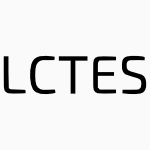 LCTES-1999-Engblom #benchmark #embedded #metric #tool support #why
LCTES-1999-Engblom #benchmark #embedded #metric #tool support #why- Why SpecInt95 Should Not Be Used to Benchmark Embedded Systems Tools (JE), pp. 96–103.
 CAV-1999-Brinksma #consistency #formal method #testing
CAV-1999-Brinksma #consistency #formal method #testing- Formal Methods for Conformance Testing: Theory Can Be Practical (EB), pp. 44–45.
 STOC-1998-BeigelBF #detection
STOC-1998-BeigelBF #detection- NP Might Not Be As Easy As Detecting Unique Solutions (RB, HB, LF), pp. 203–208.
 TAGT-1998-EngelfrietM #graph grammar
TAGT-1998-EngelfrietM #graph grammar- Tree Languages Generated be Context-Free Graph Grammars (JE, SM), pp. 15–29.
 CHI-1998-Rocco #trust
CHI-1998-Rocco #trust- Trust Breaks Down in Electronic Contexts But Can Be Repaired by Some Initial Face-to-Face Contact (ER), pp. 496–502.
 ICDAR-1997-OgierMLL #analysis #image #reliability #semantics
ICDAR-1997-OgierMLL #analysis #image #reliability #semantics- An Image Interpretation Device cannot be Reliable without any Semantic Coherency Analysis of the Interpretated Objects — Application to French Cadastral Maps (JMO, RM, JL, YL), pp. 532–535.
 PODS-1997-BreitbartK #consistency #lazy evaluation #replication
PODS-1997-BreitbartK #consistency #lazy evaluation #replication- Replication and Consistency: Being Lazy Helps Sometimes (YB, HFK), pp. 173–184.
 ITiCSE-1997-FeldmanB #concurrent #education #programming
ITiCSE-1997-FeldmanB #concurrent #education #programming- Concurrent programming CAN be introduced into the lower-level undergraduate curriculum (MBF, BDB), pp. 77–79.
 ITiCSE-1997-Moser #game studies #learning #what #why
ITiCSE-1997-Moser #game studies #learning #what #why- A fantasy adventure game as a learning environment: why learning to program is so difficult and what can be done about it (RM), pp. 114–116.
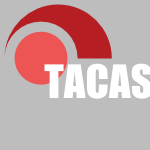 TACAS-1997-DArgenioKRT #bound #exclamation #protocol
TACAS-1997-DArgenioKRT #bound #exclamation #protocol- The Bounded Retransmission Protocol Must Be on Time! (PRD, JPK, TCR, JT), pp. 416–431.
 HCI-CC-1997-Blanchard #how #human-computer #interactive #question #standard #what
HCI-CC-1997-Blanchard #how #human-computer #interactive #question #standard #what- International Standards on Human-Computer Interaction: What is Out There and How Will it be Implemented? (HEB), pp. 599–602.
 HCI-CC-1997-LindstromLS #implementation
HCI-CC-1997-LindstromLS #implementation- Organizational Support and Employee Well-Being in the Implementation of New VDT Application (KL, TL, JS), pp. 373–377.
 HCI-SEC-1997-ArcherAR #question
HCI-SEC-1997-ArcherAR #question- Software Durability — Is it Important? Can it be Achieved? (SGA, LA, CR), pp. 593–596.
 AdaEurope-1997-GellerichP #alias #problem
AdaEurope-1997-GellerichP #alias #problem- : Parameter-Induced Aliasing and Related Problems can be Avoided (WG, EP), pp. 161–172.
 ICML-1997-SchefferGD #why
ICML-1997-SchefferGD #why- Why Experimentation can be better than “Perfect Guidance” (TS, RG, CD), pp. 331–339.
 ECOOP-1997-OnoderaN #optimisation #smalltalk
ECOOP-1997-OnoderaN #optimisation #smalltalk- Optimizing Smalltalk by Selector Code INdexing Can Be Practical (TO, HN), pp. 302–323.
 RE-1997-Harel
RE-1997-Harel- Will I Be Pretty, Will I Be Rich? Some Thoughts on Theory vs. Practice in Systems Engineering (DH), p. 184–?.
 SIGMOD-1996-BilirisFOP #interactive #named #visualisation
SIGMOD-1996-BilirisFOP #interactive #named #visualisation- BeSS: Storage Support for Interactive Visualization Systems (AB, TAF, WO, EP), p. 556.
 STOC-1996-Naor #evaluation #generative
STOC-1996-Naor #evaluation #generative- Evaluation May Be Easier Than Generation (Extended Abstract) (MN), pp. 74–83.
 CSCW-1996-Yankelovich #collaboration #education #how #internet #tutorial
CSCW-1996-Yankelovich #collaboration #education #how #internet #tutorial- An Introduction to the Internet and How it can be Used for Collaboration for K-12 Teachers (Tutorial) (NY), p. 3.
 ICPR-1996-Fainzilberg #recognition #statistics #why
ICPR-1996-Fainzilberg #recognition #statistics #why- Why relevant features may be unuseful in statistical recognition of two classes (LF), pp. 730–734.
 ICPR-1996-PlamondonG #question #segmentation #why
ICPR-1996-PlamondonG #question #segmentation #why- Why handwriting segmentation can be misleading? (RP, WG), pp. 396–400.
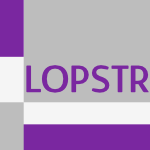 LOPSTR-1996-LeuschelS #how #logic programming
LOPSTR-1996-LeuschelS #how #logic programming- Logic Program Specialisation: How to Be More Specific (Abstract) (ML, DDS), p. 58.
 PLILP-1996-LeuschelS #how #logic programming
PLILP-1996-LeuschelS #how #logic programming- Logic Program Specialisation: How To Be More Specific (ML, DDS), pp. 137–151.
 CADE-1996-HermannK #algorithm #polynomial #unification
CADE-1996-HermannK #algorithm #polynomial #unification- Unification Algorithms Cannot be Combined in Polynomial Time (MH, PGK), pp. 246–260.
 CSL-1996-Malecki #proving
CSL-1996-Malecki #proving- Proofs in System Fω Can Be Done in System Fω¹ (SM), pp. 297–315.
 HT-ECHT-1994-Brown #hypermedia #network #question
HT-ECHT-1994-Brown #hypermedia #network #question- Adding Networking to Hypertext: Can it be Done Transparently? (PJB), pp. 51–58.
 PODS-1994-ChaudhuriK #approximate #datalog #question
PODS-1994-ChaudhuriK #approximate #datalog #question- Can Datalog be Approximated? (SC, PGK), pp. 86–96.
 PODS-1994-Harel #summary
PODS-1994-Harel #summary- Will I be Pretty, Will I be Rich? Some Thoughts on Theory vs. Practice in Systems Engineering (Summary) (DH), pp. 1–3.
 VLDB-1994-Lesk #how #image #library
VLDB-1994-Lesk #how #image #library- Experiments on Access to Digital Libraries: How can Images and Text be Used Together (ML), pp. 655–667.
 TAGT-1994-CourcelleS #graph #set
TAGT-1994-CourcelleS #graph #set- The Obstructions of a Minor-Closed Set of Graphs Defined by Hyperedge Replacement can be Constructed (BC, GS), pp. 351–367.
 AdaEurope-1994-Gray #ada #how #question
AdaEurope-1994-Gray #ada #how #question- How Should Military Ada Software be Documented? (LG), pp. 162–169.
 KR-1994-Konolige #algorithm #problem
KR-1994-Konolige #algorithm #problem- Easy to be Hard: Difficult Problems for Greedy Algorithms (KK), pp. 374–378.
 ECOOP-1994-Hursch #question
ECOOP-1994-Hursch #question- Should Superclasses be Abstract? (WLH), pp. 12–31.
 HT-1993-NanardN #empirical
HT-1993-NanardN #empirical- Should Anchors be Typed Too? An Experiment with MacWeb (JN, MN), pp. 51–62.
 STOC-1993-NaorS #question #what
STOC-1993-NaorS #question #what- What can be computed locally? (MN, LJS), pp. 184–193.
 HCI-SHI-1993-Sato #collaboration #design #development
HCI-SHI-1993-Sato #collaboration #design #development- Human Centred Collaborative Design in System Development — Intelligent Back Scratcher to be Attentive to User’s Needs (YS), pp. 949–954.
 ICML-1993-RendersBS #adaptation #black box #how
ICML-1993-RendersBS #adaptation #black box #how- Adaptive NeuroControl: How Black Box and Simple can it be (JMR, HB, MS), pp. 260–267.
 CHI-1992-HollanS
CHI-1992-HollanS- Beyond Being There (JDH, SS), pp. 119–125.
 CHI-1992-SchrierWMPSWW #human-computer #standard
CHI-1992-SchrierWMPSWW #human-computer #standard- HCI Standards on Trial: You be the Jury (JRS, ELW, KSM, LAP, PFS, AMW, JRW), pp. 635–638.
 TRI-Ada-C-1992-Beidler #component #education #tool support #what
TRI-Ada-C-1992-Beidler #component #education #tool support #what- Building on the Booch Components: What Can Be Learned When Modifying Real World Software Tools for Educational Use (JB), pp. 157–164.
 TRI-Ada-C-1992-Fussichen #ada #cics #exclamation
TRI-Ada-C-1992-Fussichen #ada #cics #exclamation- Ada and CICS: or (yes! Ada can be done on an IBM Mainframe) (KF), pp. 415–422.
 OOPSLA-1992-MasuharaMWY #concurrent #object-oriented
OOPSLA-1992-MasuharaMWY #concurrent #object-oriented- Object-Oriented Concurrent Reflective Languages can be Implemented Efficiently (HM, SM, TW, AY), pp. 127–144.
 TOOLS-PACIFIC-1992-Goldberg #object-oriented #question #using
TOOLS-PACIFIC-1992-Goldberg #object-oriented #question #using- Can A Manager Be Successful Using Object-Oriented Technology? (AG), p. 3.
 TOOLS-USA-1991-Goldberg #named #object-oriented #question #using
TOOLS-USA-1991-Goldberg #named #object-oriented #question #using- Keynote: Can a Manager Be Successful Using Object-Oriented Technology? (AG), p. 5.
 ICLP-1991-BrissetR #linear
ICLP-1991-BrissetR #linear- Naïve Reverse Can be Linear (PB, OR), pp. 857–870.
 PODS-1990-HaritsaCL #constraints #on the #realtime
PODS-1990-HaritsaCL #constraints #on the #realtime- On Being Optimistic about Real-Time Constraints (JRH, MJC, ML), pp. 331–343.
 STOC-1990-GilHW #constant
STOC-1990-GilHW #constant- Not All Keys Can Be Hashed in Constant Time (Preliminary Version) (JYG, FMadH, AW), pp. 244–253.
 STOC-1990-KleinST #algorithm #approximate #concurrent #performance
STOC-1990-KleinST #algorithm #approximate #concurrent #performance- Leighton-Rao Might Be Practical: Faster Approximation Algorithms for Concurrent Flow with Uniform Capacities (PNK, CS, ÉT), pp. 310–321.
 ICALP-1990-CheriyanHM #question
ICALP-1990-CheriyanHM #question- Can A Maximum Flow be Computed on o(nm) Time? (JC, TH, KM), pp. 235–248.
 PODS-1989-Wang #maintenance #question
PODS-1989-Wang #maintenance #question- Can Constant-time Maintainability Be More Practical? (KW), pp. 120–127.
 STOC-1989-PittW #approximate #automaton #consistency #polynomial #problem
STOC-1989-PittW #approximate #automaton #consistency #polynomial #problem- The Minimum Consistent DFA Problem Cannot Be Approximated within any Polynomial (LP, MKW), pp. 421–432.
 ICALP-1989-BrassardC #bound
ICALP-1989-BrassardC #bound- Everything in NP can be Argued in Perfect Zero-Knowledge in a Bounded Number of Rounds (GB, CC, MY), pp. 123–136.
 LICS-1989-Pitts #polymorphism #type system
LICS-1989-Pitts #polymorphism #type system- Non-trivial Power Types Can’t Be Subtypes of Polymorphic Types (AMP), pp. 6–13.
 DAC-1988-Diss #compilation
DAC-1988-Diss #compilation- Circuit Compilers don’t have to be Slow (WCD), pp. 622–627.
 LFP-1988-MeyerR #continuation
LFP-1988-MeyerR #continuation- Continuations May be Unreasonable (ARM, JGR), pp. 63–71.
 ECOOP-1988-MadsenM #object-oriented #programming #what
ECOOP-1988-MadsenM #object-oriented #programming #what- What Object-Oriented Programming May Be — and What It Does Not Have To Be (OLM, BMP), pp. 1–20.
 POPL-1988-BloomIM #bisimulation
POPL-1988-BloomIM #bisimulation- Bisimulation Can’t Be Traced (BB, SI, ARM), pp. 229–239.
 LICS-1988-Bloom #modelling #λ-calculus
LICS-1988-Bloom #modelling #λ-calculus- Can LCF Be Topped? Flat Lattice models of Typed λ Calculus (Preliminary Report) (BB), pp. 282–295.
 SIGMOD-1987-ZhangY #linear #recursion
SIGMOD-1987-ZhangY #linear #recursion- A Necessary Condition for a Doubly Recursive Rule to be Equivalent to a Linear Recursive Rule (WZ, CTY), pp. 345–356.
 POPL-1987-TannenM
POPL-1987-TannenM- Computable Values Can Be Classical (VT, ARM), pp. 238–245.
 STOC-1986-GoldwasserK
STOC-1986-GoldwasserK- Almost All Primes Can Be Quickly Certified (SG, JK), pp. 316–329.
 SIGIR-1981-Fraenkel #classification #documentation #problem
SIGIR-1981-Fraenkel #classification #documentation #problem- Document Classification, Indexing and Abstracting May be Inherently Difficult Problems (ASF), pp. 77–82.
 STOC-1980-CarlsonS #graph
STOC-1980-CarlsonS #graph- Graph Pebbling with Many Free Pebbles can be Difficult (DAC, JES), pp. 326–332.
 STOC-1979-Valiant
STOC-1979-Valiant- Negation Can Be Exponentially Powerful (LGV), pp. 189–196.
 ICSE-1979-Dijkstra #re-engineering
ICSE-1979-Dijkstra #re-engineering- Software Engineering : As It Should Be (EWD), pp. 442–448.
 ICSE-1979-Turski #re-engineering
ICSE-1979-Turski #re-engineering- Software Engineering : As It Will Be (WMT), pp. 449–456.
 ICSE-1976-Fabry #design #how #on the fly
ICSE-1976-Fabry #design #how #on the fly- How to Design a System in Which Modules Can Be Changed on the Fly (RSF), pp. 470–476.
 STOC-1973-WeinerSB #algorithm
STOC-1973-WeinerSB #algorithm- Neighborhood Search Algorithms for Finding Optimal Traveling Salesman Tours Must Be Inefficient (PW, SLS, AB), pp. 207–213.
 ICALP-1972-Bohm #question #syntax
ICALP-1972-Bohm #question #syntax- Can Syntax Be Ignored during Translation? (CB, MDC), pp. 197–207.
 DATE-2015-HuangKGT #scheduling
DATE-2015-HuangKGT #scheduling DATE-2015-MaHJ #manycore
DATE-2015-MaHJ #manycore SIGMOD-2015-Anagnostopoulos #crowdsourcing #performance
SIGMOD-2015-Anagnostopoulos #crowdsourcing #performance ICSME-2015-KranasZV #flexibility #interface
ICSME-2015-KranasZV #flexibility #interface ICSME-2015-NittaM #abstraction #why
ICSME-2015-NittaM #abstraction #why STOC-2015-BackursI #distance #edit distance
STOC-2015-BackursI #distance #edit distance ICALP-v1-2015-AzarC
ICALP-v1-2015-AzarC CHI-2015-BirnholtzMP #facebook #quote
CHI-2015-BirnholtzMP #facebook #quote CHI-2015-DevendorfR #configuration management #hybrid
CHI-2015-DevendorfR #configuration management #hybrid CHI-2015-MentisSPFS #programming
CHI-2015-MentisSPFS #programming CSCW-2015-HindsRC
CSCW-2015-HindsRC CSCW-2015-IslamP #network #social
CSCW-2015-IslamP #network #social CSCW-2015-LiZLDG #collaboration #editing #trade-off #wiki
CSCW-2015-LiZLDG #collaboration #editing #trade-off #wiki LCT-2015-BajajHKPSDY #question #word
LCT-2015-BajajHKPSDY #question #word SIGIR-2015-Hawking #question #what
SIGIR-2015-Hawking #question #what ECMFA-2015-DiskinMC #category theory #imperative #model management #visual notation
ECMFA-2015-DiskinMC #category theory #imperative #model management #visual notation SAC-2015-LoffRM #predict #social #social media
SAC-2015-LoffRM #predict #social #social media HPCA-2015-PeraisS #effectiveness #framework #named #predict
HPCA-2015-PeraisS #effectiveness #framework #named #predict DAC-2014-SorinMZ #architecture #power management
DAC-2014-SorinMZ #architecture #power management SIGMOD-2014-CheungMS #database #lazy evaluation #named #query
SIGMOD-2014-CheungMS #database #lazy evaluation #named #query SIGMOD-2014-HoweFFFKR #database #education #question
SIGMOD-2014-HoweFFFKR #database #education #question STOC-2014-LiNW #algorithm #linear #sketching #streaming
STOC-2014-LiNW #algorithm #linear #sketching #streaming ICALP-v1-2014-MancinskaV #bound #probability
ICALP-v1-2014-MancinskaV #bound #probability CHI-2014-ShayKDHMSUBCC #question
CHI-2014-ShayKDHMSUBCC #question CHI-2014-SunDLLG #case study #using
CHI-2014-SunDLLG #case study #using CSCW-2014-MartinHOG
CSCW-2014-MartinHOG CSCW-2014-PreistMC #volunteer
CSCW-2014-PreistMC #volunteer CSCW-2014-Rooksby #question
CSCW-2014-Rooksby #question HCI-AS-2014-JanssonSBAT #automation #design
HCI-AS-2014-JanssonSBAT #automation #design HIMI-AS-2014-HaysahiH #collaboration #concept
HIMI-AS-2014-HaysahiH #collaboration #concept SCSM-2014-FrischlichRR #identification #social
SCSM-2014-FrischlichRR #identification #social HILT-2014-BaggeH #algebra #api #specification #why
HILT-2014-BaggeH #algebra #api #specification #why HILT-2014-Crocker #c++ #question
HILT-2014-Crocker #c++ #question ICPR-2014-YamashitaTYYF #strict
ICPR-2014-YamashitaTYYF #strict KMIS-2014-SaoutalMC #communication
KMIS-2014-SaoutalMC #communication SPLC-2014-Reinhartz-Berger #automation #domain model #modelling
SPLC-2014-Reinhartz-Berger #automation #domain model #modelling ICDAR-2013-Newell #identification #question #what
ICDAR-2013-Newell #identification #question #what SIGMOD-2013-YakoutBE #automation #bound #scalability
SIGMOD-2013-YakoutBE #automation #bound #scalability ICALP-v2-2013-Widmayer #nondeterminism
ICALP-v2-2013-Widmayer #nondeterminism CHI-2013-HakanssonS #product line
CHI-2013-HakanssonS #product line CHI-2013-IsaacsKWLHW #how
CHI-2013-IsaacsKWLHW #how CHI-2013-SodhiJFBM #3d #collaboration #mobile #named
CHI-2013-SodhiJFBM #3d #collaboration #mobile #named CSCW-2013-LarsonRSS #exclamation #game studies #student
CSCW-2013-LarsonRSS #exclamation #game studies #student DUXU-NTE-2013-SannaVBBR #approach #behaviour #design
DUXU-NTE-2013-SannaVBBR #approach #behaviour #design DUXU-NTE-2013-ViciniBRS #behaviour
DUXU-NTE-2013-ViciniBRS #behaviour HIMI-HSM-2013-Wesugi #approach #design #experience #novel #simulation
HIMI-HSM-2013-Wesugi #approach #design #experience #novel #simulation OCSC-2013-HallCW #approach #community #predict
OCSC-2013-HallCW #approach #community #predict OCSC-2013-LopezFM #behaviour
OCSC-2013-LopezFM #behaviour AdaEurope-2013-XueN
AdaEurope-2013-XueN ICEIS-v3-2013-SilvaSH #design
ICEIS-v3-2013-SilvaSH #design CIKM-2013-KamathC #learning #predict #what
CIKM-2013-KamathC #learning #predict #what ECIR-2013-Cleger-TamayoFHT #predict #quality #recommendation
ECIR-2013-Cleger-TamayoFHT #predict #quality #recommendation SEKE-2013-BazharAJ #behaviour #modelling #named #repository
SEKE-2013-BazharAJ #behaviour #modelling #named #repository SIGIR-2013-RaiberCK #optimisation
SIGIR-2013-RaiberCK #optimisation SKY-2013-Gomes #how #ontology #recommendation #representation #using
SKY-2013-Gomes #how #ontology #recommendation #representation #using RE-2013-WangLWYZL #debugging #dependence #integration #network #question #requirements
RE-2013-WangLWYZL #debugging #dependence #integration #network #question #requirements SPLC-2013-SchulzeMB #functional #question #safety #variability
SPLC-2013-SchulzeMB #functional #question #safety #variability PLOS-2013-Kell #operating system #question
PLOS-2013-Kell #operating system #question CASE-2012-HoNNH #question #what
CASE-2012-HoNNH #question #what DAC-2012-SharifiSKI #capacity
DAC-2012-SharifiSKI #capacity ITiCSE-2012-Assiter #effectiveness
ITiCSE-2012-Assiter #effectiveness ITiCSE-2012-HershkovichH #education #how #tool support
ITiCSE-2012-HershkovichH #education #how #tool support ICSM-2012-ZhangPXZ #developer #what #why
ICSM-2012-ZhangPXZ #developer #what #why CHI-2012-JohnsonRLB #challenge #research
CHI-2012-JohnsonRLB #challenge #research CHI-2012-KoppelBMW #behaviour
CHI-2012-KoppelBMW #behaviour CSCW-2012-KoehneSO
CSCW-2012-KoehneSO CSCW-2012-PoelmanALJ
CSCW-2012-PoelmanALJ CSCW-2012-StarbirdP #how #information management
CSCW-2012-StarbirdP #how #information management HILT-2012-Bosch #library
HILT-2012-Bosch #library ICEIS-v2-2012-Pohjalainen #agile #bottom-up #modelling
ICEIS-v2-2012-Pohjalainen #agile #bottom-up #modelling CIKM-2012-StuparM #query
CIKM-2012-StuparM #query ICPR-2012-HadidGKPBN #question
ICPR-2012-HadidGKPBN #question SIGIR-2012-MaSC #hashtag #question
SIGIR-2012-MaSC #hashtag #question SAC-2012-NunesARTCS #analysis #data type
SAC-2012-NunesARTCS #analysis #data type SAC-2012-RahmanOMCA #development #mobile
SAC-2012-RahmanOMCA #development #mobile ICSE-2012-LemosFSG #agile #assessment #development #empirical #programming
ICSE-2012-LemosFSG #agile #assessment #development #empirical #programming ICSE-2012-ZhouZL #debugging #information retrieval #locality
ICSE-2012-ZhouZL #debugging #information retrieval #locality OSDI-2012-YuanPHLLTZS
OSDI-2012-YuanPHLLTZS PPoPP-2012-BlellochFGS #algorithm #parallel #performance
PPoPP-2012-BlellochFGS #algorithm #parallel #performance ICST-2012-ChenLYS #question #testing #user interface #what
ICST-2012-ChenLYS #question #testing #user interface #what DAC-2011-Mador-HaimAM #consistency #how #memory management #modelling #question #testing
DAC-2011-Mador-HaimAM #consistency #how #memory management #modelling #question #testing SIGMOD-2011-SadoghiJ #named
SIGMOD-2011-SadoghiJ #named STOC-2011-RegevK #communication #quantum
STOC-2011-RegevK #communication #quantum DLT-2011-Zetzsche
DLT-2011-Zetzsche CHI-2011-SauroL #design #question #usability
CHI-2011-SauroL #design #question #usability CSCW-2011-FarnhamC #online #social
CSCW-2011-FarnhamC #online #social HCI-MIIE-2011-TakahashiAI #question #twitter
HCI-MIIE-2011-TakahashiAI #question #twitter HIMI-v2-2011-TakadamaOSMOIHS #order #question #what
HIMI-v2-2011-TakadamaOSMOIHS #order #question #what CIKM-2011-SakaiKS #information management
CIKM-2011-SakaiKS #information management ECIR-2011-MagdyJ #black box #question
ECIR-2011-MagdyJ #black box #question KEOD-2011-SharmaB #ontology #problem #question
KEOD-2011-SharmaB #ontology #problem #question POPL-2011-AttiyaGHKMV #algorithm #concurrent #order
POPL-2011-AttiyaGHKMV #algorithm #concurrent #order ASE-2010-Green #implementation #specification
ASE-2010-Green #implementation #specification CASE-2010-CabasinoGS #fault #petri net #using
CASE-2010-CabasinoGS #fault #petri net #using DATE-2010-GrottesiMRB #animation #parallel
DATE-2010-GrottesiMRB #animation #parallel DocEng-2010-Vega-OliverosMP #automation #documentation #generative #interactive #quote
DocEng-2010-Vega-OliverosMP #automation #documentation #generative #interactive #quote HT-2010-MitzlaffBSH #analysis #network
HT-2010-MitzlaffBSH #analysis #network CSEET-2010-Broman #education #question #re-engineering
CSEET-2010-Broman #education #question #re-engineering CSEET-2010-Thompson #effectiveness #industrial #re-engineering #why
CSEET-2010-Thompson #effectiveness #industrial #re-engineering #why FoSSaCS-2010-AltenkirchCU #monad
FoSSaCS-2010-AltenkirchCU #monad SCAM-2010-Harman #analysis #source code #why
SCAM-2010-Harman #analysis #source code #why PEPM-2010-Siek #metalanguage
PEPM-2010-Siek #metalanguage ICALP-v1-2010-Welzl #constraints #satisfiability
ICALP-v1-2010-Welzl #constraints #satisfiability ICALP-v2-2010-AlistarhGGZ #cost analysis #how #performance
ICALP-v2-2010-AlistarhGGZ #cost analysis #how #performance ICGT-2010-BrandtH #enterprise #graph transformation #how #modelling #question
ICGT-2010-BrandtH #enterprise #graph transformation #how #modelling #question CHI-2010-AhlstromCGI #design #modelling #why
CHI-2010-AhlstromCGI #design #modelling #why CHI-2010-BurkeML #network #process #social
CHI-2010-BurkeML #network #process #social CHI-2010-KarkkainenVV #case study #mobile #process
CHI-2010-KarkkainenVV #case study #mobile #process SIGAda-2010-FongBLGWMW
SIGAda-2010-FongBLGWMW ICEIS-HCI-2010-Mital #mobile #privacy
ICEIS-HCI-2010-Mital #mobile #privacy ECIR-2010-AnderkaSP #bound #similarity #why
ECIR-2010-AnderkaSP #bound #similarity #why ICPR-2010-YonetaniKHM #estimation
ICPR-2010-YonetaniKHM #estimation SEKE-2010-AsteasuainB #specification
SEKE-2010-AsteasuainB #specification OOPSLA-2010-Stanley
OOPSLA-2010-Stanley SAC-2010-ChowdhuryZ #complexity #metric #question
SAC-2010-ChowdhuryZ #complexity #metric #question SAC-2010-LiuCXMBG #architecture #domain-specific language #question
SAC-2010-LiuCXMBG #architecture #domain-specific language #question OSDI-2010-SherwoodGYACMP #network #question
OSDI-2010-SherwoodGYACMP #network #question ESOP-2009-WadlerF #source code
ESOP-2009-WadlerF #source code CHI-2009-ChettyBMJ #comprehension #power management
CHI-2009-ChettyBMJ #comprehension #power management CHI-2009-IsbisterH #challenge #design #evaluation #human-computer #on the
CHI-2009-IsbisterH #challenge #design #evaluation #human-computer #on the CHI-2009-LindleyHS
CHI-2009-LindleyHS CHI-2009-Zimmerman #design #people
CHI-2009-Zimmerman #design #people HCI-NT-2009-PalanqueLNB #interactive #prototype
HCI-NT-2009-PalanqueLNB #interactive #prototype ICEIS-HCI-2009-TaggB #how #information management #quantum #question
ICEIS-HCI-2009-TaggB #how #information management #quantum #question ECIR-2009-Kettunen #metric #question #source code
ECIR-2009-Kettunen #metric #question #source code SIGIR-2009-ElsasC #concurrent #evaluation #online #retrieval #thread
SIGIR-2009-ElsasC #concurrent #evaluation #online #retrieval #thread SAT-2009-LewisMSNBG #distributed #named
SAT-2009-LewisMSNBG #distributed #named HT-2008-ChoudhurySJS08a #communication #correlation #process #question
HT-2008-ChoudhurySJS08a #communication #correlation #process #question CSEET-2008-Epstein #agile #how #process #student
CSEET-2008-Epstein #agile #how #process #student MSR-2008-Bernstein #data mining #how #mining
MSR-2008-Bernstein #data mining #how #mining ICALP-C-2008-DingDYCC #question
ICALP-C-2008-DingDYCC #question CHI-2008-JonssonHN #how #information management
CHI-2008-JonssonHN #how #information management CSCW-2008-PlodererHT #network #online #social
CSCW-2008-PlodererHT #network #online #social CIKM-2008-BischoffFNP #question
CIKM-2008-BischoffFNP #question SIGIR-2008-McNameeNM
SIGIR-2008-McNameeNM ICMT-2008-SiikarlaLSS #rest
ICMT-2008-SiikarlaLSS #rest SAC-2008-AdaikkalavanC #exclamation
SAC-2008-AdaikkalavanC #exclamation SAC-2008-FariaM #recognition #scalability #speech
SAC-2008-FariaM #recognition #scalability #speech SAT-2008-SchederZ #how #question #satisfiability
SAT-2008-SchederZ #how #question #satisfiability ASE-2007-Selic #automation #what
ASE-2007-Selic #automation #what DAC-2007-IrvineL #hardware #question
DAC-2007-IrvineL #hardware #question HT-2007-NelsonSM #hypermedia
HT-2007-NelsonSM #hypermedia ITiCSE-2007-PecinovskyP #interface #order
ITiCSE-2007-PecinovskyP #interface #order STOC-2007-Austrin #satisfiability
STOC-2007-Austrin #satisfiability ILC-2007-Sperber #all about #lessons learnt #process
ILC-2007-Sperber #all about #lessons learnt #process DHM-2007-SadasivanG #question
DHM-2007-SadasivanG #question HCI-AS-2007-Moallem #enterprise #how
HCI-AS-2007-Moallem #enterprise #how HCI-IDU-2007-HwangP #experience #social
HCI-IDU-2007-HwangP #experience #social HCI-IDU-2007-VanharantaS #interactive
HCI-IDU-2007-VanharantaS #interactive HCI-MIE-2007-GratchWOLMWM #question
HCI-MIE-2007-GratchWOLMWM #question OOPSLA-2007-KuhneS #multi #programming
OOPSLA-2007-KuhneS #multi #programming ICSE-2007-MaidenNR #case study #experience #requirements
ICSE-2007-MaidenNR #case study #experience #requirements DAC-2006-YangCBDSK #question
DAC-2006-YangCBDSK #question ITiCSE-2006-RobilaR #education
ITiCSE-2006-RobilaR #education ICSM-2006-XingS #case study #eclipse #how #refactoring
ICSM-2006-XingS #case study #eclipse #how #refactoring STOC-2006-Impagliazzo #algorithm #question #random
STOC-2006-Impagliazzo #algorithm #question #random STOC-2006-Nordstrom #proving
STOC-2006-Nordstrom #proving DLT-2006-GurevichW #question #state machine
DLT-2006-GurevichW #question #state machine CHI-2006-BosONSHJ #distributed #question
CHI-2006-BosONSHJ #distributed #question CHI-2006-BrownB
CHI-2006-BrownB CHI-2006-NimwegenBOS #effectiveness
CHI-2006-NimwegenBOS #effectiveness CHI-2006-RoblesSRN #how
CHI-2006-RoblesSRN #how CHI-2006-ShklovskiKC #internet
CHI-2006-ShklovskiKC #internet SIGAda-2006-Taft #ada #exclamation #using #why
SIGAda-2006-Taft #ada #exclamation #using #why SAT-2006-DantsinW #constant #performance #satisfiability
SAT-2006-DantsinW #constant #performance #satisfiability WICSA-2005-LungZG #architecture #what
WICSA-2005-LungZG #architecture #what DAC-2005-FoxCMHHJKYZ #approach #question
DAC-2005-FoxCMHHJKYZ #approach #question DAC-2005-NandraDMDHLSA
DAC-2005-NandraDMDHLSA DATE-2005-ZorianFWESGR #industrial #question
DATE-2005-ZorianFWESGR #industrial #question ICDAR-2005-MoussaZAB #classification
ICDAR-2005-MoussaZAB #classification PLDI-2005-Boehm #library #thread
PLDI-2005-Boehm #library #thread STOC-2005-BenjaminiSW
STOC-2005-BenjaminiSW ICEIS-v3-2005-Al-Fedaghi
ICEIS-v3-2005-Al-Fedaghi ICEIS-v5-2005-Murano #effectiveness #feedback #user interface #why
ICEIS-v5-2005-Murano #effectiveness #feedback #user interface #why SIGIR-2005-AllanCL #information retrieval #question
SIGIR-2005-AllanCL #information retrieval #question TLCA-2005-Hayashi #game studies #proving #question
TLCA-2005-Hayashi #game studies #proving #question DATE-DF-2004-Werner #quality #question
DATE-DF-2004-Werner #quality #question CSEET-2004-SmithLL #java #question #re-engineering #realtime
CSEET-2004-SmithLL #java #question #re-engineering #realtime ITiCSE-2004-MintonBD #case study #problem
ITiCSE-2004-MintonBD #case study #problem ICALP-2004-BojanczykC #automaton
ICALP-2004-BojanczykC #automaton CSEET-2003-Cowling #question #what
CSEET-2003-Cowling #question #what ITiCSE-2003-Christensen #education #exclamation #testing #topic
ITiCSE-2003-Christensen #education #exclamation #testing #topic ITiCSE-2003-EkateriniSP #education #learning #problem
ITiCSE-2003-EkateriniSP #education #learning #problem FoSSaCS-2003-BonevaT
FoSSaCS-2003-BonevaT FoSSaCS-2003-Maier #composition
FoSSaCS-2003-Maier #composition ICEIS-v4-2003-StanojevicTV #named
ICEIS-v4-2003-StanojevicTV #named SIGIR-2003-Roelleke #probability
SIGIR-2003-Roelleke #probability SAC-2003-MernikGZB #parsing #question
SAC-2003-MernikGZB #parsing #question ICSE-2003-Cohoon #women
ICSE-2003-Cohoon #women SAT-2003-GoldbergN #how #question
SAT-2003-GoldbergN #how #question TLCA-2003-Kahrs #source code
TLCA-2003-Kahrs #source code STOC-2002-DinurS
STOC-2002-DinurS DLT-2002-UmeoK #automaton #communication #infinity #realtime #sequence
DLT-2002-UmeoK #automaton #communication #infinity #realtime #sequence ICGT-2002-Harel #behaviour #requirements #why
ICGT-2002-Harel #behaviour #requirements #why CHI-2002-HudsonCKE #quote #research
CHI-2002-HudsonCKE #quote #research CSCW-2002-GirgensohnL #interactive #social #web
CSCW-2002-GirgensohnL #interactive #social #web CIKM-2002-Zemankova #information management #question #research
CIKM-2002-Zemankova #information management #question #research CADE-2002-BorrallerasLR #order #recursion
CADE-2002-BorrallerasLR #order #recursion WICSA-2001-Kozaczynski #architecture #question
WICSA-2001-Kozaczynski #architecture #question CSMR-2001-AbreuG #composition #question
CSMR-2001-AbreuG #composition #question STOC-2001-Valiant #polynomial #quantum
STOC-2001-Valiant #polynomial #quantum TOOLS-EUROPE-2001-Abom01b #component #exclamation #process
TOOLS-EUROPE-2001-Abom01b #component #exclamation #process TOOLS-USA-2001-Abom01a #exclamation
TOOLS-USA-2001-Abom01a #exclamation PPDP-2001-Schmidt #declarative #programming #question #uml
PPDP-2001-Schmidt #declarative #programming #question #uml ICSE-2001-ModesittBW #bibliography #re-engineering #source code #what
ICSE-2001-ModesittBW #bibliography #re-engineering #source code #what CBSE-2000-Hall #case study #component #education #question #what
CBSE-2000-Hall #case study #component #education #question #what VLDB-2000-KemmeA #consistency #database #lazy evaluation #replication
VLDB-2000-KemmeA #consistency #database #lazy evaluation #replication ITiCSE-2000-DavyABJ #student
ITiCSE-2000-DavyABJ #student CHI-2000-EspinosaCRKSL #tool support #why
CHI-2000-EspinosaCRKSL #tool support #why EDOC-2000-LingT #internet
EDOC-2000-LingT #internet ICEIS-2000-Seddon #case study #framework #multi #question
ICEIS-2000-Seddon #case study #framework #multi #question ICPR-v4-2000-KagamiOII #3d #generative #realtime
ICPR-v4-2000-KagamiOII #3d #generative #realtime KR-2000-DimopoulosNT
KR-2000-DimopoulosNT ICSE-2000-Edwards #online #quality #question #re-engineering
ICSE-2000-Edwards #online #quality #question #re-engineering CSEET-1999-McMillanR #re-engineering #student #what
CSEET-1999-McMillanR #re-engineering #student #what ITiCSE-1999-KopecCA #algorithm #data type #how
ITiCSE-1999-KopecCA #algorithm #data type #how HCI-CCAD-1999-Croon
HCI-CCAD-1999-Croon HCI-CCAD-1999-Machate #concept #interactive #multimodal #smarttech
HCI-CCAD-1999-Machate #concept #interactive #multimodal #smarttech HCI-EI-1999-LeinoRH #problem #usability
HCI-EI-1999-LeinoRH #problem #usability HCI-EI-1999-MarcusAFG #design #matter
HCI-EI-1999-MarcusAFG #design #matter HCI-EI-1999-Seppala #experience
HCI-EI-1999-Seppala #experience SIGIR-1999-Eastman #internet #precise
SIGIR-1999-Eastman #internet #precise UML-1999-MillerW #classification #how #question
UML-1999-MillerW #classification #how #question TOOLS-ASIA-1999-Al-AhmadS #inheritance #modelling #reuse
TOOLS-ASIA-1999-Al-AhmadS #inheritance #modelling #reuse TOOLS-PACIFIC-1999-SchmolitzkyEKM #how #question #type safety
TOOLS-PACIFIC-1999-SchmolitzkyEKM #how #question #type safety HPCA-1999-HilyS #effectiveness #execution #multi #thread
HPCA-1999-HilyS #effectiveness #execution #multi #thread LCTES-1999-Engblom #benchmark #embedded #metric #tool support #why
LCTES-1999-Engblom #benchmark #embedded #metric #tool support #why CAV-1999-Brinksma #consistency #formal method #testing
CAV-1999-Brinksma #consistency #formal method #testing STOC-1998-BeigelBF #detection
STOC-1998-BeigelBF #detection TAGT-1998-EngelfrietM #graph grammar
TAGT-1998-EngelfrietM #graph grammar CHI-1998-Rocco #trust
CHI-1998-Rocco #trust ICDAR-1997-OgierMLL #analysis #image #reliability #semantics
ICDAR-1997-OgierMLL #analysis #image #reliability #semantics PODS-1997-BreitbartK #consistency #lazy evaluation #replication
PODS-1997-BreitbartK #consistency #lazy evaluation #replication ITiCSE-1997-FeldmanB #concurrent #education #programming
ITiCSE-1997-FeldmanB #concurrent #education #programming ITiCSE-1997-Moser #game studies #learning #what #why
ITiCSE-1997-Moser #game studies #learning #what #why TACAS-1997-DArgenioKRT #bound #exclamation #protocol
TACAS-1997-DArgenioKRT #bound #exclamation #protocol HCI-CC-1997-Blanchard #how #human-computer #interactive #question #standard #what
HCI-CC-1997-Blanchard #how #human-computer #interactive #question #standard #what HCI-CC-1997-LindstromLS #implementation
HCI-CC-1997-LindstromLS #implementation HCI-SEC-1997-ArcherAR #question
HCI-SEC-1997-ArcherAR #question AdaEurope-1997-GellerichP #alias #problem
AdaEurope-1997-GellerichP #alias #problem ICML-1997-SchefferGD #why
ICML-1997-SchefferGD #why ECOOP-1997-OnoderaN #optimisation #smalltalk
ECOOP-1997-OnoderaN #optimisation #smalltalk RE-1997-Harel
RE-1997-Harel SIGMOD-1996-BilirisFOP #interactive #named #visualisation
SIGMOD-1996-BilirisFOP #interactive #named #visualisation STOC-1996-Naor #evaluation #generative
STOC-1996-Naor #evaluation #generative CSCW-1996-Yankelovich #collaboration #education #how #internet #tutorial
CSCW-1996-Yankelovich #collaboration #education #how #internet #tutorial ICPR-1996-Fainzilberg #recognition #statistics #why
ICPR-1996-Fainzilberg #recognition #statistics #why ICPR-1996-PlamondonG #question #segmentation #why
ICPR-1996-PlamondonG #question #segmentation #why LOPSTR-1996-LeuschelS #how #logic programming
LOPSTR-1996-LeuschelS #how #logic programming PLILP-1996-LeuschelS #how #logic programming
PLILP-1996-LeuschelS #how #logic programming CADE-1996-HermannK #algorithm #polynomial #unification
CADE-1996-HermannK #algorithm #polynomial #unification CSL-1996-Malecki #proving
CSL-1996-Malecki #proving HT-ECHT-1994-Brown #hypermedia #network #question
HT-ECHT-1994-Brown #hypermedia #network #question PODS-1994-ChaudhuriK #approximate #datalog #question
PODS-1994-ChaudhuriK #approximate #datalog #question PODS-1994-Harel #summary
PODS-1994-Harel #summary VLDB-1994-Lesk #how #image #library
VLDB-1994-Lesk #how #image #library TAGT-1994-CourcelleS #graph #set
TAGT-1994-CourcelleS #graph #set AdaEurope-1994-Gray #ada #how #question
AdaEurope-1994-Gray #ada #how #question KR-1994-Konolige #algorithm #problem
KR-1994-Konolige #algorithm #problem ECOOP-1994-Hursch #question
ECOOP-1994-Hursch #question HT-1993-NanardN #empirical
HT-1993-NanardN #empirical STOC-1993-NaorS #question #what
STOC-1993-NaorS #question #what HCI-SHI-1993-Sato #collaboration #design #development
HCI-SHI-1993-Sato #collaboration #design #development ICML-1993-RendersBS #adaptation #black box #how
ICML-1993-RendersBS #adaptation #black box #how CHI-1992-HollanS
CHI-1992-HollanS CHI-1992-SchrierWMPSWW #human-computer #standard
CHI-1992-SchrierWMPSWW #human-computer #standard TRI-Ada-C-1992-Beidler #component #education #tool support #what
TRI-Ada-C-1992-Beidler #component #education #tool support #what TRI-Ada-C-1992-Fussichen #ada #cics #exclamation
TRI-Ada-C-1992-Fussichen #ada #cics #exclamation OOPSLA-1992-MasuharaMWY #concurrent #object-oriented
OOPSLA-1992-MasuharaMWY #concurrent #object-oriented TOOLS-PACIFIC-1992-Goldberg #object-oriented #question #using
TOOLS-PACIFIC-1992-Goldberg #object-oriented #question #using TOOLS-USA-1991-Goldberg #named #object-oriented #question #using
TOOLS-USA-1991-Goldberg #named #object-oriented #question #using ICLP-1991-BrissetR #linear
ICLP-1991-BrissetR #linear PODS-1990-HaritsaCL #constraints #on the #realtime
PODS-1990-HaritsaCL #constraints #on the #realtime STOC-1990-GilHW #constant
STOC-1990-GilHW #constant STOC-1990-KleinST #algorithm #approximate #concurrent #performance
STOC-1990-KleinST #algorithm #approximate #concurrent #performance ICALP-1990-CheriyanHM #question
ICALP-1990-CheriyanHM #question PODS-1989-Wang #maintenance #question
PODS-1989-Wang #maintenance #question STOC-1989-PittW #approximate #automaton #consistency #polynomial #problem
STOC-1989-PittW #approximate #automaton #consistency #polynomial #problem ICALP-1989-BrassardC #bound
ICALP-1989-BrassardC #bound LICS-1989-Pitts #polymorphism #type system
LICS-1989-Pitts #polymorphism #type system DAC-1988-Diss #compilation
DAC-1988-Diss #compilation LFP-1988-MeyerR #continuation
LFP-1988-MeyerR #continuation ECOOP-1988-MadsenM #object-oriented #programming #what
ECOOP-1988-MadsenM #object-oriented #programming #what POPL-1988-BloomIM #bisimulation
POPL-1988-BloomIM #bisimulation LICS-1988-Bloom #modelling #λ-calculus
LICS-1988-Bloom #modelling #λ-calculus SIGMOD-1987-ZhangY #linear #recursion
SIGMOD-1987-ZhangY #linear #recursion POPL-1987-TannenM
POPL-1987-TannenM STOC-1986-GoldwasserK
STOC-1986-GoldwasserK SIGIR-1981-Fraenkel #classification #documentation #problem
SIGIR-1981-Fraenkel #classification #documentation #problem STOC-1980-CarlsonS #graph
STOC-1980-CarlsonS #graph STOC-1979-Valiant
STOC-1979-Valiant ICSE-1979-Dijkstra #re-engineering
ICSE-1979-Dijkstra #re-engineering ICSE-1979-Turski #re-engineering
ICSE-1979-Turski #re-engineering ICSE-1976-Fabry #design #how #on the fly
ICSE-1976-Fabry #design #how #on the fly STOC-1973-WeinerSB #algorithm
STOC-1973-WeinerSB #algorithm ICALP-1972-Bohm #question #syntax
ICALP-1972-Bohm #question #syntax









